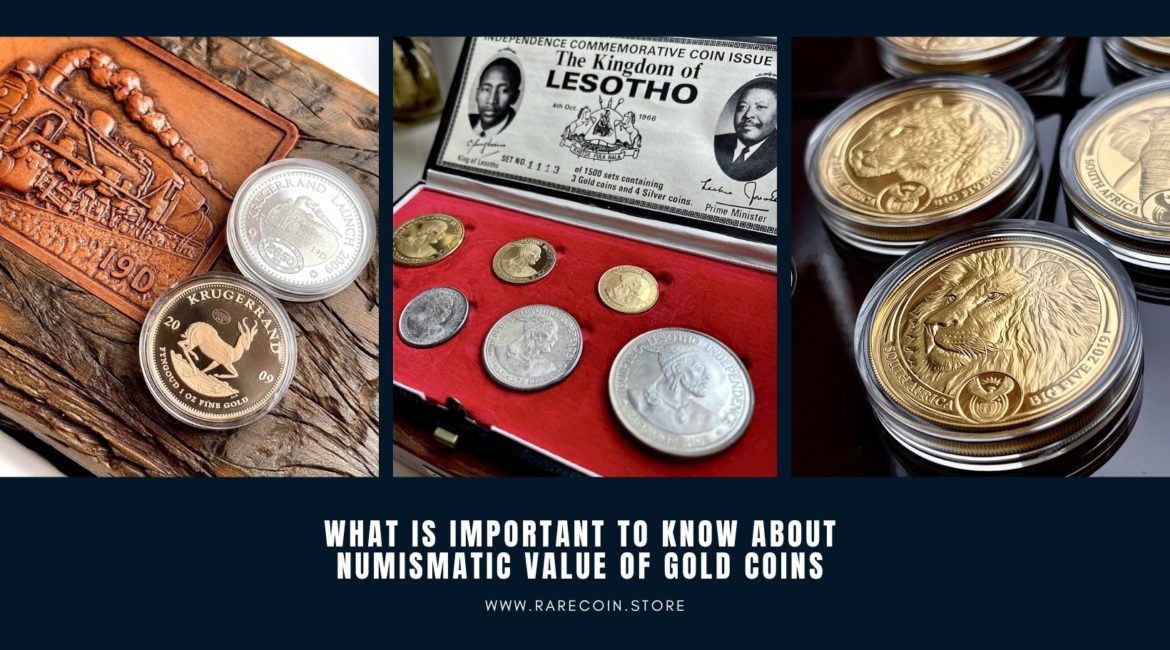Gold coins have a high numismatic value due to their historical, cultural and aesthetic appeal. Numismatics deals with the study and collection of coins, and gold coins in particular have captivated collectors and investors for centuries. Apart from their intrinsic value as precious metals, gold coins embody a unique combination of artistry, historical significance, rarity and market demand.
What are actually numismatic coins? Numismatic gold coins are collectible coins that have a higher value than the spot or current market price of gold.
In the blog: Differences Between Collector Coins and Bullion Coins for more details on the differences between regular bullion coins and higher priced collector coins.
Historical significance
One of the most important factors contributing to the numismatic value of gold coins is their historical significance. Many gold coins were minted in ancient civilizations, empires, or during significant historical events. These coins provide a tangible link to the past and offer insight into the economic, political and cultural aspects of the era in which they were minted. Coin collectors appreciate such coins because they can associate them with certain periods of history, which increases their appeal and value.
Historical significance of gold coins using the example of the Krugerrand
The Krugerrand gold coins hold a significant place in the annals of history, representing a key moment in the global gold market. These iconic coins were created by the South African Mint in 1967 as a means to promote and facilitate the trade of gold bullion. However, their impact went far beyond trade.
In the late 1960s and 1970s, a profound change took place in the international gold market. The Krugerrand played a crucial role in this, as it was the first modern gold bullion coin in the world to be minted from pure gold. Prior to the introduction of the Krugerrand, gold coins were minted primarily for circulation and contained varying gold content, which made them less suitable for investment purposes.
The unique composition of the Krugerrand with one troy ounce of gold and a small amount of copper to increase durability set a new standard. It provided a convenient and accessible way for individuals to invest in gold, responding to the growing interest in precious metals as a hedge against inflation and economic uncertainty.
In addition to its practical properties, the Krugerrand also symbolized a significant chapter in South Africa’s history. The coin was named after Paul Kruger, the revered South African statesman and president of the former South African Republic, and features his portrait on the obverse. The iconic springbok antelope, a national symbol of South Africa, adorned the back.
However, the association of the Krugerrand with South Africa became a point of contention during the apartheid era. Due to international opposition to apartheid policies, many countries imposed sanctions on South Africa, which included restrictions on the import and trade of Krugerrand coins. This led to a fascinating paradox: while the Krugerrand was instrumental in shaping the global gold market, it was simultaneously enmeshed in the history of apartheid and became a symbol of division and political unrest.
Nevertheless, the Krugerrand outlasted the apartheid era and continued to flourish. In fact, it remained the dominant gold bullion coin in the world for several decades, and its success prompted the creation of other national bullion coins, such as the American Gold Eagle and the Canadian Gold Maple Leaf.
Today, the Krugerrand’s historical significance lies in its role as a trailblazer – a pioneer that revolutionized the gold market and opened the door for countless other countries to mint their own bullion coins. His enduring legacy is a reminder of gold’s importance as a store of value and the power of a simple coin to transcend borders, markets and historical eras.
Artistic craftsmanship
Artistic craftsmanship is another key element that increases the numismatic value of gold coins. Throughout history, various cultures have demonstrated their artistic skills by designing intricate and visually stunning coins. The details on these coins often reflect the cultural, religious or political motifs of the time. The combination of precious metal and artistic beauty makes gold coins coveted objects for collectors around the world who appreciate the fusion of aesthetics and historical significance.
Examples:
200 ruble gold coin 1996 Amur Tiger Proof (mintage: 1000)
South Africa Protea – 2014 – Nelson Mandela – 20 years of democracy – 200 Rand – NGC PF70 UCAM (Edition: 1338)
Lesotho – 1969 – Moshoeshoe II – FAO – Gold Set
Rarity of gold coins
The rarity of gold coins strongly affects their numismatic value. The rarity of a particular coin may be due to a number of factors, such as a limited mintage, loss or destruction over time, or surviving specimens in excellent condition. Rare gold coins, especially those with low mintage or high grading (more about grading here: Grading a coin: NGC and PCGS) are highly sought after by collectors. The rarity factor drives up their value, as demand often exceeds available supply.
Examples of rare gold coins and sets
South Africa – 1957 – Pound Twin Proof Set – 1 Pound and ½ Pound – original blue SA Mint case(Edition: 180)
Krugerrand 2006 and 2010 Double Strike Berlin Bear 2oz Proof Gold 2 Coin Set(Mintage: 85)
Gold coin condition
The condition or quality of a gold coin also affects its numismatic value. Collectors prefer coins in pristine condition, known as “Mint State = MS” or “Uncirculated” for bullion coins and PR/PF for proof coins.
Examples:
USA – 10 Dollar – 2007 – First Spouse Series – Thomas Jefferson’s Liberty – NGC MS70
Krugerrand – 2015 – Winston Churchill – Gold – NGC PF70 UCAM
These coins show no signs of wear, and their original luster and details are well preserved. Higher graded coins are rarer and fetch higher prices on the numismatic market. Professional grading services PCGS and NGC assess and grade coins and provide collectors with an objective assessment of a coin’s condition.
Market demand
Market demand plays an important role in determining the numismatic value of gold coins. Collectors, investors and even institutions are actively seeking rare and valuable gold coins to add to their collections or portfolios. This demand can lead to a bidding war at auctions, private sales, and numismatic markets, driving up prices for particularly desirable coins. Market trends, economic conditions, and investor sentiment also affect the demand and value of gold coins.
It is important to know that numismatic value is not the same as the intrinsic value of the gold content of a coin!
The intrinsic value is based on the weight and purity of the gold and fluctuates with the market price of the metal. Numismatic value, on the other hand, includes factors beyond the value of the metal, such as historical significance, rarity, condition, and demand.
In summary, some gold coins have considerable numismatic value due to their historical significance, artistry, rarity, and market demand. Coin collectors and investors are attracted to the unique blend of aesthetics, historical context and rarity that gold coins offer. The numismatic value of gold coins often far exceeds their intrinsic value, making them a fascinating and rewarding value for numismatic enthusiasts.
Discover the new additions to our gold coin collection in the current range!
-
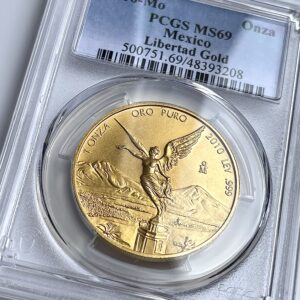
Mexico – 2010 – Libertad – Gold coin 1 oz – PCGS MS69
3.150,00 €plus shippingDelivery Time: approx. 2-3 days (excluding Saturdays, Sundays and public holidays) -
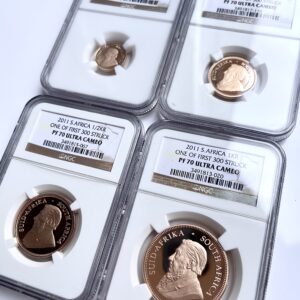
Krugerrand – 2011 – Set – One of First 300 – 4 Gold Coins Proof – NGC PF70 UCAM
5.500,00 €plus shippingDelivery Time: approx. 2-3 days (excluding Saturdays, Sundays and public holidays) -
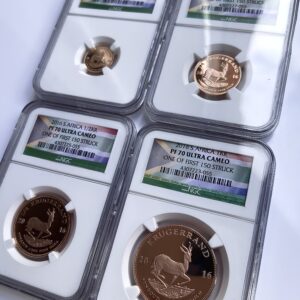
Krugerrand – 2016 – Set – One of First 150 – 4 Gold Coins Proof – NGC PF70 UCAM
5.500,00 €plus shippingDelivery Time: approx. 2-3 days (excluding Saturdays, Sundays and public holidays) -
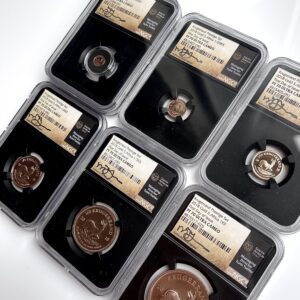
Krugerrand – 2018 – Set – First Day of Issue – 6 Gold Coins Proof – NGC PF70 UCAM
5.750,00 €plus shippingDelivery Time: approx. 2-3 days (excluding Saturdays, Sundays and public holidays) -
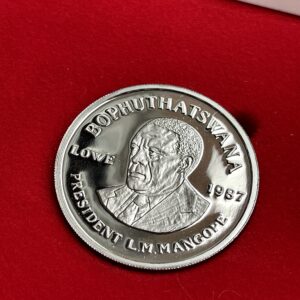
Bophuthatswana – 1987 – 10 years of independence – platinum – 1oz – with original case and certificate
2.195,00 €plus shippingDelivery Time: approx. 2-3 days (excluding Saturdays, Sundays and public holidays) -
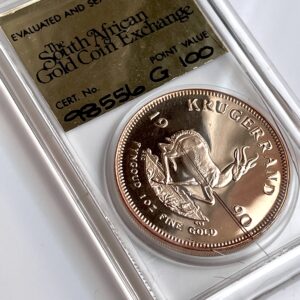
South Africa – Krugerrand – GRC – 1990 – SAGCE PoV 100 – 1oz Proof Gold
3.250,00 €plus shippingDelivery Time: approx. 2-3 days (excluding Saturdays, Sundays and public holidays) -
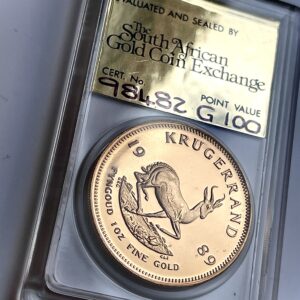
South Africa – Krugerrand – GRC – 1989 – SAGCE PoV 100 – 1oz Proof Gold
3.250,00 €plus shippingDelivery Time: approx. 2-3 days (excluding Saturdays, Sundays and public holidays) -
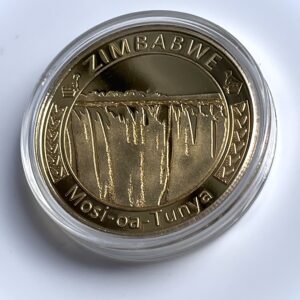
Zimbabwe – 2022 – Mosi-oa-Tunya – 1oz Proof Gold
3.150,00 €plus shippingDelivery Time: approx. 2-3 days (excluding Saturdays, Sundays and public holidays) -
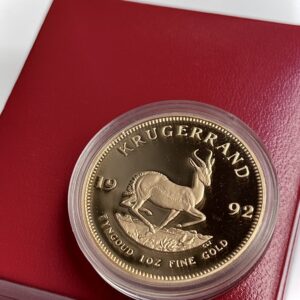
South Africa – Krugerrand – 1992 – 1oz gold coin proof with box
5.750,00 €plus shippingDelivery Time: approx. 2-3 days (excluding Saturdays, Sundays and public holidays) -
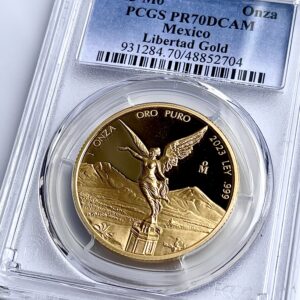
Mexico – 2023 – Libertad – Gold Coin Proof 1 oz – PCGS PR70 Deep Cameo
2.950,00 €plus shippingDelivery Time: approx. 2-3 days (excluding Saturdays, Sundays and public holidays)

